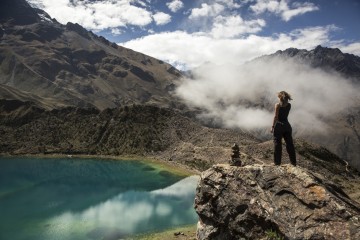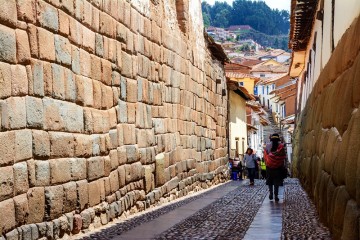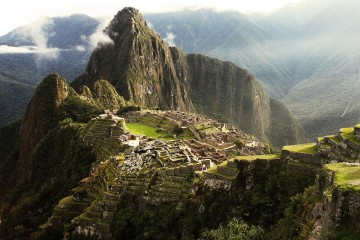Experience Inca culture on our tours to Peru.
What comes to mind when you picture the Andes region in South America? Perhaps you imagine ancient Inca ceremonies, grand festivals, or deep spiritual rituals happening every day. While it’s true that some of these traditions still exist, they’re not always front and centre. The magic of Inca culture isn’t about big shows and not even prominent historical sites like Machu Picchu— but rather in myriad little details that have been woven into daily life.
Five centuries after the fall of the Inca Empire, their traditions live on. Not in museums, but in the hearts and habits of Andean communities. It’s in the vibrant textiles you see at local markets, the earthy flavours of Andean cuisine, and the quiet rituals people perform to honour Pachamama, or Mother Earth.
If you're looking to connect with the Inca civilisation on your tour of South America, know that it will not be about finding big, flashy displays. Instead, it will be about recognising and appreciating the subtle ways this culture still thrives.
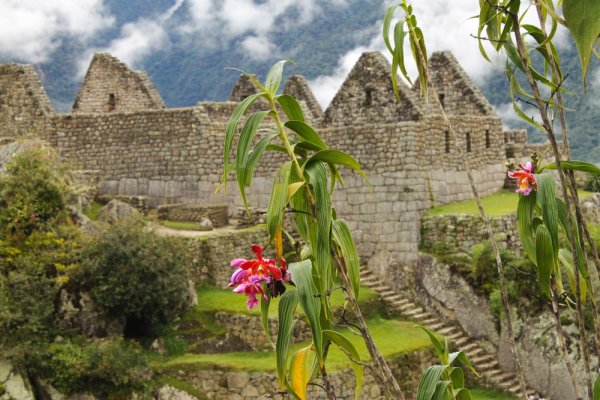
Beautiful flowers with the background of Inca citadel
Where was the Inca Empire?
The Inca Empire, or Tawantinsuyu as they called it, was massive. It covered a vast area of western South America, including parts of modern-day Peru, Ecuador, Bolivia, Colombia, Chile & Argentina.
At its peak, the empire stretched over 4,000 km (2,500 miles) and had a population of around 10 million. Cusco, in Peru, was its capital and spiritual centre, and continues to be a great place to start if you want to explore Inca history. From there, you can visit iconic sites like Machu Picchu and the Sacred Valley & Ollantaytambo to see the scale and sophistication of their civilisation.
What happened to Inca culture?
Learn more about the Inca civilisation on Viva's tours of Peru.
The Inca Empire was one of the greatest civilisations in the Americas and boasted incredible achievements in architecture, agriculture, and governance. But everything changed in the 16th century when Spanish conquistadors arrived.
The Spanish dismantled the Inca Empire in a matter of years. Temples were destroyed, sacred rituals outlawed, and the people were forced into labour. Since the Incas relied on oral tradition and quipu rather than written records, much of their cultural knowledge was lost during this violent upheaval. Yet, not all was erased. The Incas adapted remarkably well, blending their traditions with Catholic practices imposed by the Spanish. This cultural fusion is why, today, you’ll find festivals, rituals, and crafts that have roots in both Inca and colonial traditions.
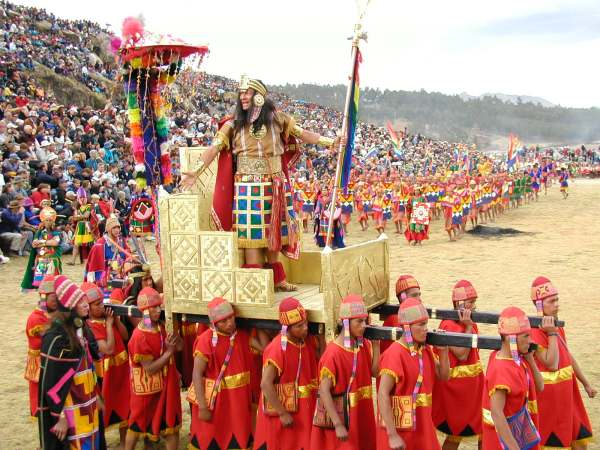
The traditional festival of Inti Raymi celebrated the Inca sun god, Inti, and marked the winter solstice. After Spanish arrival, the ritual was banned under order of Viceroy Francisco de Toledo, in the 16th century. Local historians eventually revived the ceremonial festival in the 1940s. More details of Inti Raymi to follow.
Do the Incas Still Exist?
The answer to this depends on how you define “Incas.” There are no full-blooded Incas left, but their descendants are everywhere in the Andes. These Quechua-speaking communities are living connections to the past because Quechua is more than just a language; it’s a cultural identity.
Many people in Peru, Ecuador, and Bolivia still follow traditional farming practices, weaving techniques, and spiritual rituals that date back to Inca times. If you visit rural villages, you’ll see firsthand how these traditions are passed down through generations. So, while the Inca Empire itself is long gone, its people and their way of life continue to shape the Andes.
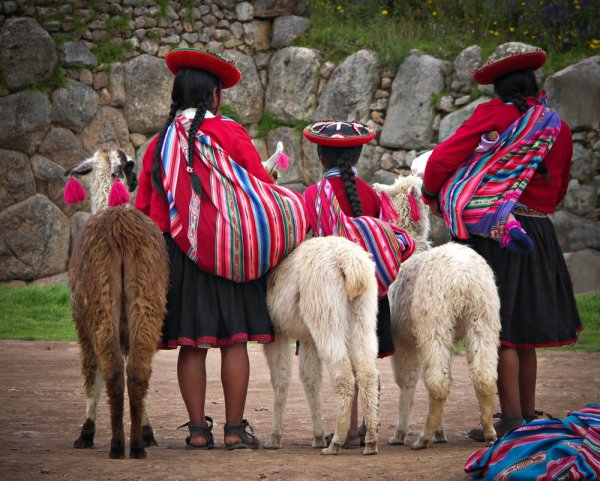
ILlamas, bright traditional clothing made of colourful woven materials - ancient Inca traditions are everywhere.
Ancient Inca traditions that still exist today
There may be a lot we don't know about the ancient Inca culture, but there's certainly a lot that we do know. We know that the most important aspects of local Andean culture today hail back to the days of the mighty Incas.
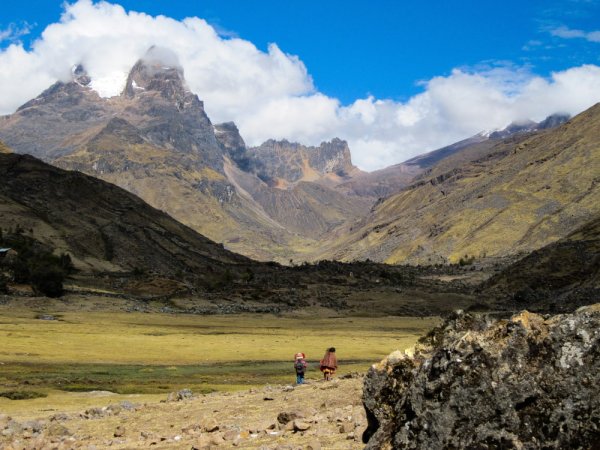
Hiking in the lands of the Inca civilisation - the best way to soak up the magic in Peru.
The Quechua Language
If you don’t speak the slightest smattering of Spanish, you may not even notice that, deep in the Andes, locals usually only speak Quechua, the traditional language of the ancient Incas. You may well realise soon enough, though: learn a few Spanish words and try to converse with locals, and you'll probably be met with blank stares and a wave of the hand. "That’s not our lingo," they say, so try hand gestures instead or pick up a few Quechua words from your tour guide.
Over four million Peruvians speak Quechua; in the remotest regions, they speak nothing else. This is, by far, the most prolific and potent Inca tradition that still thrives today. Interestingly enough, you may like to know that a few words of Quechua have even been adopted abroad – quinoa, guano, coca, llama, vicuna, and puma are all Quechuan terms.
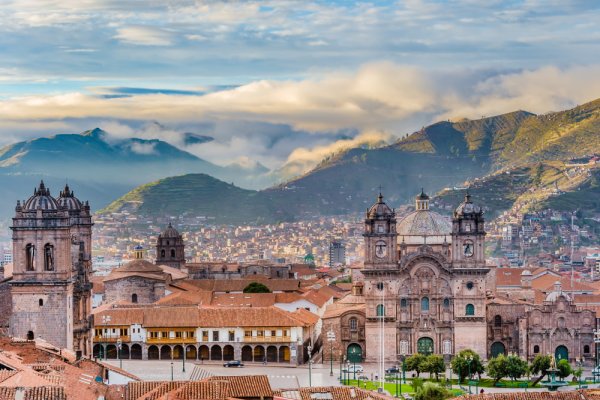
The beautiful city of Cusco, in Peru, was the capital of the mighty Inca civilisation.
The art of weaving and traditional dress
In the Andes, traditional weaving isn't just about making clothes—nowadays, buying whatever is needed in markets is faster and cheaper. No, in this exquisite part of the world, weaving and textile making is a way of preserving history. The bright, intricate patterns you'll see in markets and museums are full of meaning, with symbols representing everything from mountains to stars. This craft has been recognised as a UNESCO Intangible Cultural Heritage, helping preserve it for future generations.
Many local weaving cooperatives welcome visitors, giving you the chance to see the process up close. In places like Cusco’s Textile Centre, you can watch artisans spin, dye, and weave their creations using techniques passed down for centuries. The clothes themselves are stunning. Ponchos, skirts, and hats in vibrant colours are part of everyday life in many Andean communities. What's incredibly inspiring is that these garments are made to last, reflecting the Inca value of living sustainably.
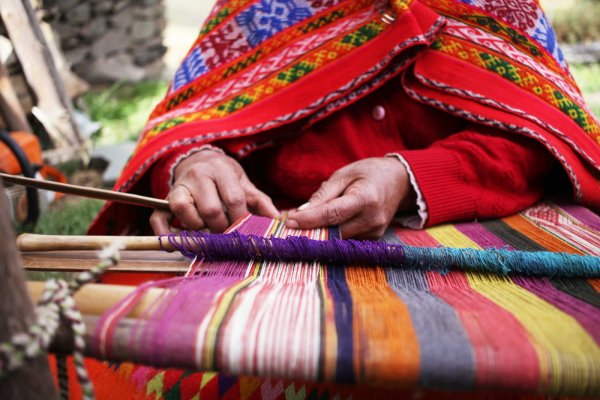
Peruvian woman making traditional clothes - a UNESOC-protected Inca tradition
Pottery and artistic traditions
The Incas were master artists who influenced modern Andean crafts. Pottery, for example, played a significant role in Inca life, serving both practical and ceremonial purposes. Today, you'll find beautiful ceramic pieces in local markets and high-end boutiques all over Peru, many inspired by ancient designs. If you're a history lover, don't miss Lima's Archaeology and Anthropology Museum. It houses an incredible collection of original Inca pottery and artefacts from other ancient Peruvian cultures like the Nazca and Moche. Seeing these pieces up close is a great way to appreciate the artistry and skill of the Inca people.
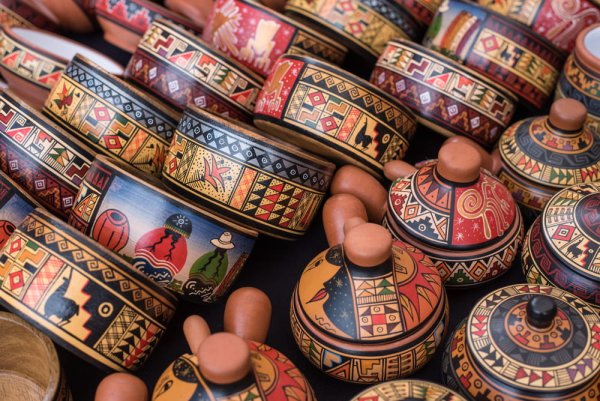
Colourful Peruvian pottery
Traditional Inca foods
Food is another way to connect with the Inca civilisation. Many dishes served in the Andes today trace their roots back to ancient times. The Incas were agricultural pioneers, cultivating crops like quinoa, potatoes, and corn in terraced fields. A must-try is chicha, a traditional corn beer central to Inca ceremonies. While modern versions are a staple in Andean communities (ask your guide how you can spot a house that sells homemade chicha), serving it is a lot less ceremonial than it used to be. Another dish to try is pachamanca, a meal cooked in an earth oven. This ancient technique uses hot stones to bake meat, potatoes, and other ingredients, creating a flavourful feast that’s deeply tied to the land.
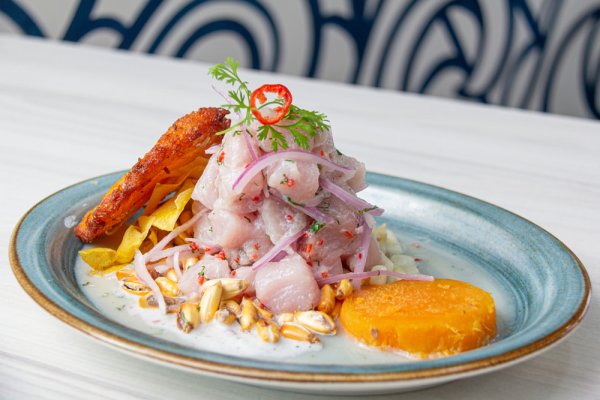
Ceviche is one of Peru’s most delightful dishes. Although not strictly of Inca descent (given they had no access to citrus fruits) there is evidence they cured raw fish in chicha instead.
One of the most endearing aspects of ancient Inca culture is the subtle ways it persists in everyday life, defying the notion that such traditions are entirely lost. Locals often perform minuscule, almost imperceptible rituals before meals, whispering words to Pachamama, and sprinkling a portion of their drink or food on the ground as a dedication to her. You might not see it at a Michelin-starred restaurant in Lima, but you will see it in local Andean eateries or as you share meals with your guides on the Inca trail. These gestures reflect a profound cultural reverence that lingers in the memory long after leaving Peru. Travellers can still encounter and appreciate this enduring influence of Inca traditions in the country today.
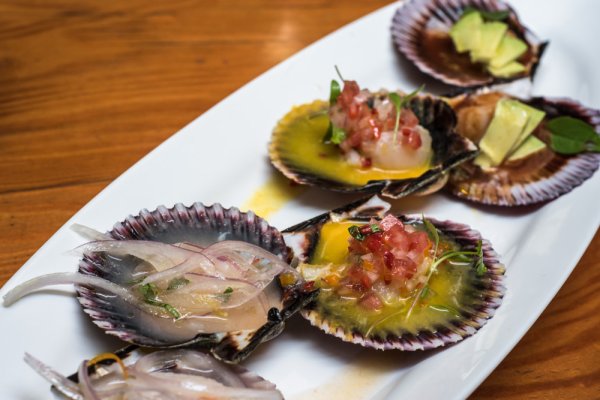
Foodie tours in Peru include some of the best-rated restaurants in South America – yet even in the most modern establishments, you will find dishes and ingredients inspired by Inca traditions.
Ancient Inca Festivals You Can Experience - Inti Raymi, Cusco (Peru)
If you’re looking for vibrant festivals that echo ancient Inca traditions, Peru is the place to be. Festivals are a fantastic way to see how the Andean people keep their cultural roots alive while blending in modern elements. One of the biggest and most famous festivals is Inti Raymi, held every June in Cusco. This re-creation of the Inca Festival of the Sun brings together hundreds of locals dressed in traditional Inca attire. The celebration features music, dance, and a reenactment of ancient rituals honouring Inti, the sun god. Initially, this festival also included sacrifices, but thankfully, the modern version skips the gory parts!
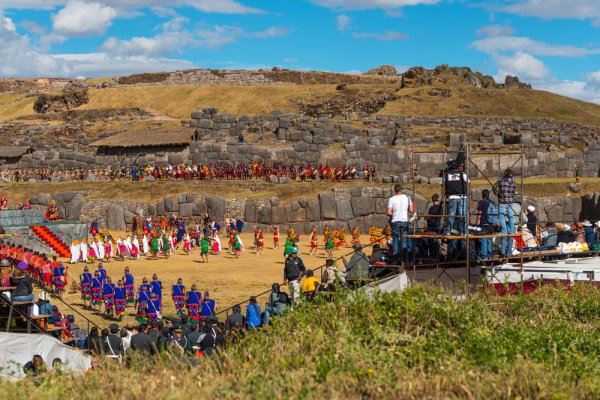
Inti Raymi festival in Cusco, Peru
Another fascinating celebration is the Qoyllur Rit’i Festival, which takes place high in the Andes. This event combines Inca and Catholic traditions, with pilgrims climbing glaciers to honour both Pachamama and Catholic saints. UNESCO-listed, the festival is yet another powerful reminder of how the Inca civilisation adapted and survived even under Spanish rule.
Practical Tips for Experiencing Inca Culture
Visit Local Villages
Beyond tourist hotspots, smaller villages offer a more authentic glimpse into Inca traditions. Places like Pisac and Chinchero are great for meeting local artisans and farmers.
Respect Local Customs
If you're invited to take part in a ritual or celebration, embrace the opportunity with an open mind. And don't forget to learn a few Quechua phrases—it's a beautiful way to show respect and connect with locals.
Visit With a Knowledgeable Guide
Many traditions have hidden meanings that are easy to miss without context. A guide can help you appreciate the deeper significance of what you’re seeing.
Why the Inca Civilization Still Inspires
Even though the Inca Empire fell centuries ago, its legacy and traditions are to be discovered everywhere in the Andes. From their jaw-dropping engineering feats to their deeply spiritual way of life, the Incas have left an indelible mark in their region and on the world. When you visit these places, engage with the people who carry on their traditions, and appreciate what they offer, you're not just learning about their history...you're becoming a part of its preservation.
If you are keen to experience ancient Inca traditions in the Andes – check out our full collection of South America Tours. Let us know what you dream of experiencing, and we'll make it happen. At Viva Expeditions, that’s what we do best.
Laura Pattara
Laura Pattara writes for Viva Expeditions with a special love for all things Latin America. She had guided overland tours across the continent, reached Machu Picchu five times on foot, and even dressed up as a giant toucan for Carnaval. With a degree in languages and two decades of global travel experience behind her, Laura has a long-standing love for the Andes, soaring condors, and a truly delicious empanada.
|
